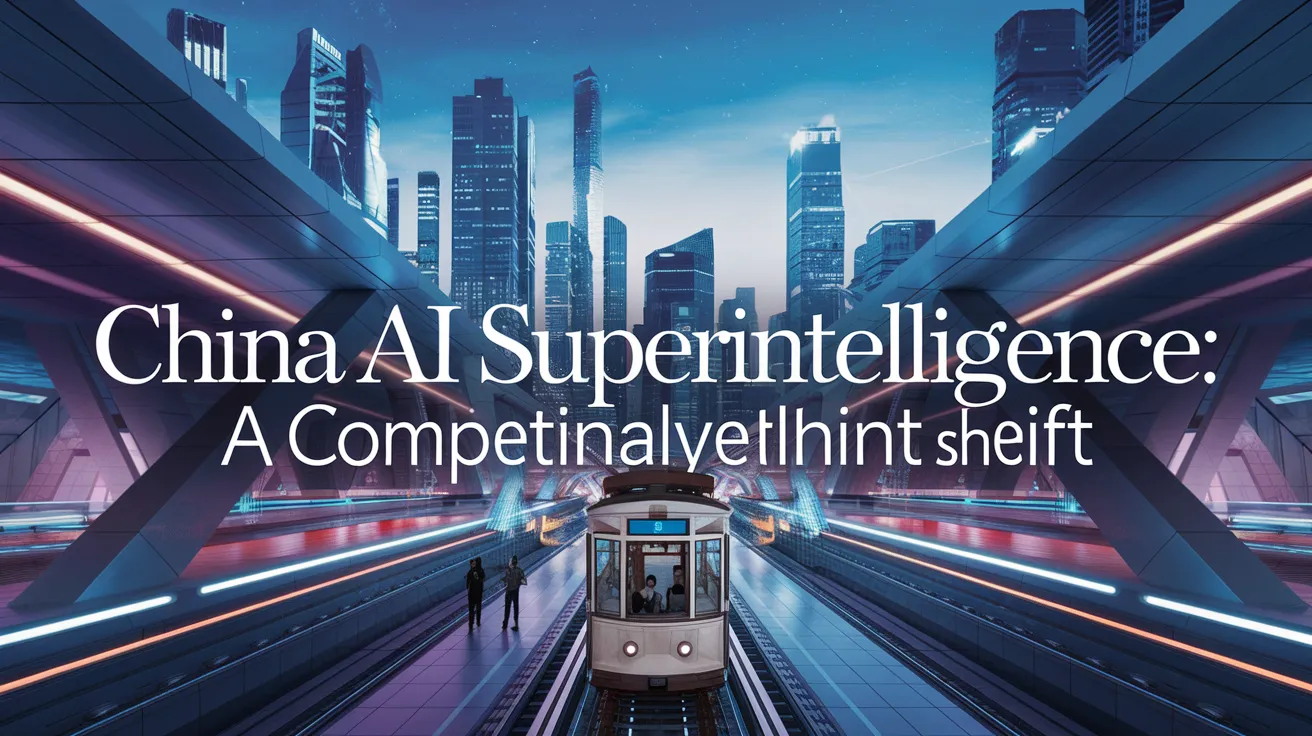China AI Superintelligence: A Competitive Shift

In recent developments, China’s tech landscape is witnessing a notable shift in its approach to artificial intelligence, highlighted by Alibaba CEO Eddie Wu’s keynote speech at the Alibaba Cloud conference in Hangzhou. During the address, he introduced a visionary concept: a “Roadmap to Artificial Superintelligence”. This announcement marks a pivotal moment as Alibaba becomes the first major Chinese tech company to explicitly reference artificial general intelligence (AGI) and artificial superintelligence (ASI).
Wu presented a compelling case for the inevitability of achieving AGI—an intelligence system resembling human cognitive abilities—as a starting point on a journey towards ASI, a state where AI surpasses human intelligence through self-iteration and evolution. He suggested that ASI has the potential to significantly advance various fields, including healthcare and energy, possibly enabling even interstellar travel. The boldness of Wu’s claims underscores a transformative ambition within the Chinese tech sphere.
The competitive landscape between the U.S. and China in the AI sector is evolving, with both nations recognized as leading powers equipped with advanced computing capabilities and top-tier researchers. While there is a perception that China is primarily focused on practical applications of AI, comments from experts such as Helen Toner challenge this notion, affirming that interest in AGI and superintelligence exists within China, albeit often among smaller startups rather than the major players. Afra Wang also emphasized the significance of Wu’s remarks, indicating that they reflect a departure from traditional narratives within China’s largest tech firms.
Despite the skepticism surrounding the feasibility of achieving ASI, the frequency with which the topic is being discussed is increasing. American AI companies, including OpenAI, have publicly engaged with the concept of superintelligence, suggesting an awareness of its implications. Meanwhile, U.S. congressional discussions now include measures aimed at assessing the potential of controlled AI systems advancing toward superintelligence, revealing a growing acknowledgment of both the challenges and opportunities posed by AI advancements.
Contradictions exist regarding the AI “race” narrative, where various American politicians emphasize the urgency of outpacing China. Just as the White House promotes an action plan to dominate the AI landscape, concerns arise about the unknown consequences should an unchecked race toward AGI or ASI unfold. Critics argue that chasing these ambitions might evoke existential risks for humanity rather than solely technological progress.
It is also crucial to note the marketing undertones of such grand narratives. With Alibaba’s Qwen model series gaining popularity as a leading open-source AI platform, the timing of Wu’s revelations has positively impacted Alibaba’s stock, reflecting broader trends in how narratives about U.S.-China competition influence investor perceptions and valuations in the tech sector. Wu anticipates a future where advanced AI models become the cornerstone of operational systems powered by Alibaba Cloud—a vision intertwined with the company’s business model.
In summary, as the dialogue around AI superintelligence gains traction within both Chinese and American tech sectors, it embodies not only a pursuit of innovation but also a strategic maneuvering in a highly competitive technological landscape.